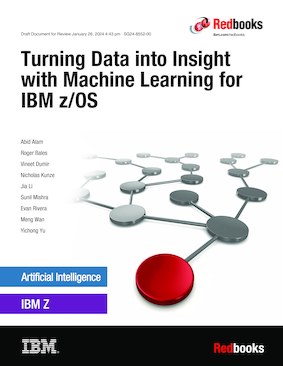Abstract
The exponential growth in data over the last decade coupled with a drastic adoption of artificial intelligence has opened organizations up to valuable insights, opportunities for improvements in efficiency, increases in profits, and overall deliver more business value both internally to employees and shareholders and externally to clients and consumers. The data that fuels these insights is the foundation that these organizations must tap in to innovate and they must capitalize on the most advanced AI capabilities to stay ahead of the competition, and they must do so in a secure environment that protects the data throughout its lifecycle and data access in real-time at any time.
When it comes to security, nothing can rival IBM Z, the multi-workload transactional platform that powers the core business processes of the majority of the Fortune 500 enterprises with unmatched security, availability, reliability, and scalability. With core transactions and data originating on IBM Z , it simply makes sense for AI to exist and run on the same platform.
For years, some businesses chose to move their sensitive data off IBM Z, however, the massive growth of digital data, the punishing cost of security exposures as well as the unprecedented demand for instant actionable intelligence from data in real time have convinced them to rethink that decision and, instead, embrace the strategy of data gravity for AI. Transaction gravity is the other force here which eludes to the trillions of transactions that move through IBM Z as it hosts some of the worlds most mission critical workloads that runs the global economy. It is this dual strategy of data and transaction gravity that sets IBM Z apart. For organizations to get real-time business and operational insights at scale, the AI workloads must be co-located with the transactional applications and where the data originates.
IBM Z has made tremendous invests in this space, starting at the hardware silicon level with the industry first Telum on-chip AI inference accelerator introduced with IBM z16 all the way up the stack with our enterprise grade AI/ML software offerings with a robust and optimized open source ecosystem support.
Machine Learning for IBM z/OS is one of IBM's flagship offerings that helps organizations deploy machine learning models on IBM z/OS environments natively close to their most mission critical workloads and infuse them with AI. In the inherently secure Z environment, your machine learning scoring services can co-exist with your transactional applications and data, supporting high throughput and minimizing response time while delivering consistent service level agreements (SLAs).
This book introduces Machine Learning for IBM z/OS version 3.1.0 and describes its unique value proposition in addition to the business value of AI on the IBM Z platform. It provides guidance for you to get started with aligning your business goals and use cases for AI. It outlines the various patterns for accessing and consuming IBM Z data in on-premises, cloud, and hybrid environments. It discusses in detail the steps and best practices for model building, deployment, and inferencing and post deployment monitoring.
The book includes examples of how you can use the versatile and intuitive web user interface of MLz to quickly train, evaluate, and deploy a model. Through a batch job elapsed time prediction example, the book explores the value of MLz in such a use case and shows how to apply the batch job elapsed time model with MLz for application integration and provides insight into how MLz can be leveraged within machine learning operations to operationalize AI on IBM Z. Most importantly, it examines use cases across industries to illustrate how you can easily turn your massive data into valuable insights with Machine Learning for IBM z/OS.
Table of Contents
Chapter 1. Unlocking the business value of AI on IBM Z
Chapter 2. Building business-driven and strategic use cases with MLz
Chapter 3. The art of data engineering
Chapter 4. Model building for IBM Z
Chapter 5. Model deployment and inferencing
Chapter 6. Streamlining AI from models to applications using machine learning operations
Special Notices
The material included in this document is in DRAFT form and is provided 'as is' without warranty of any kind. IBM is not responsible for the accuracy or completeness of the material, and may update the document at any time. The final, published document may not include any, or all, of the material included herein. Client assumes all risks associated with Client's use of this document.
